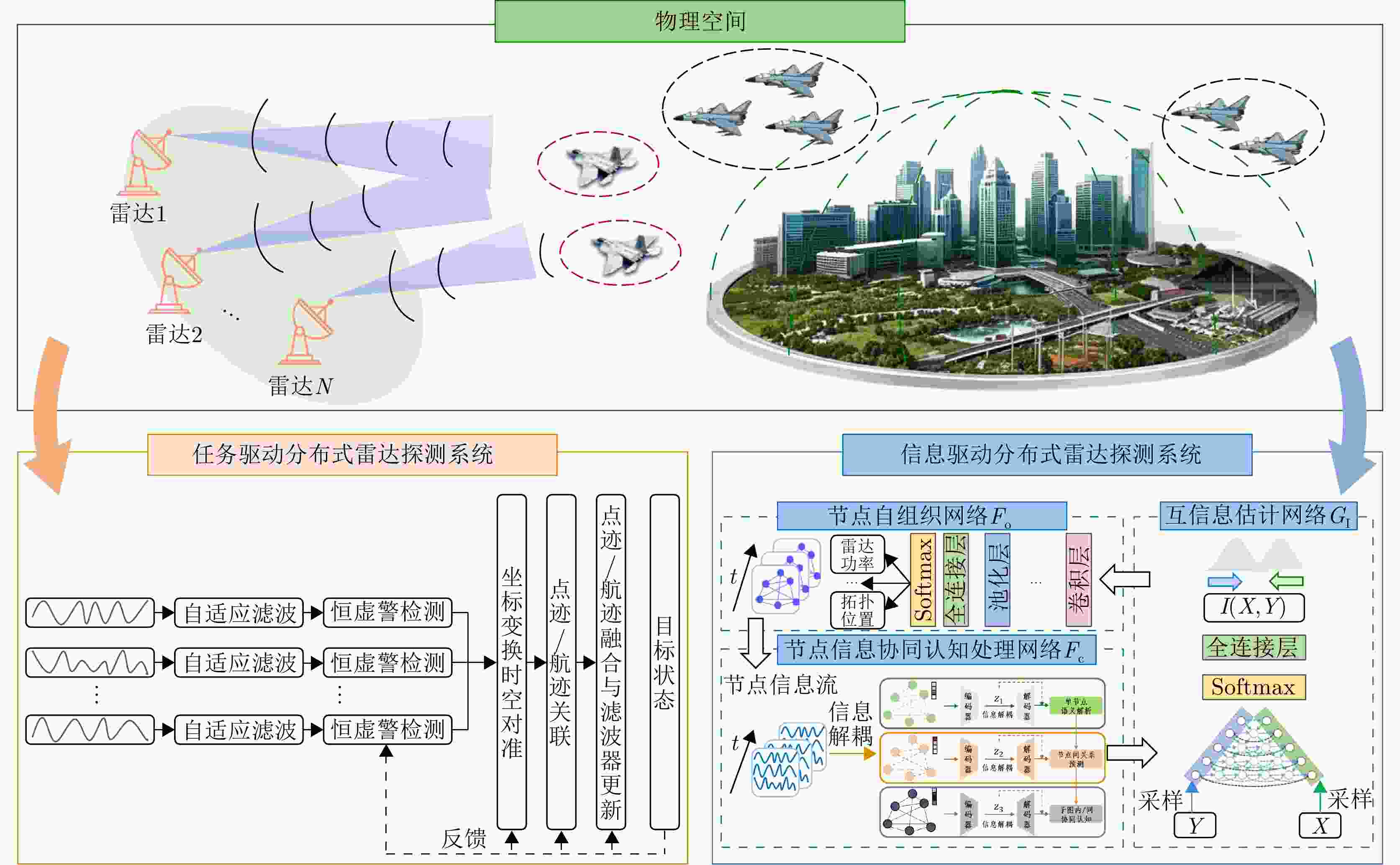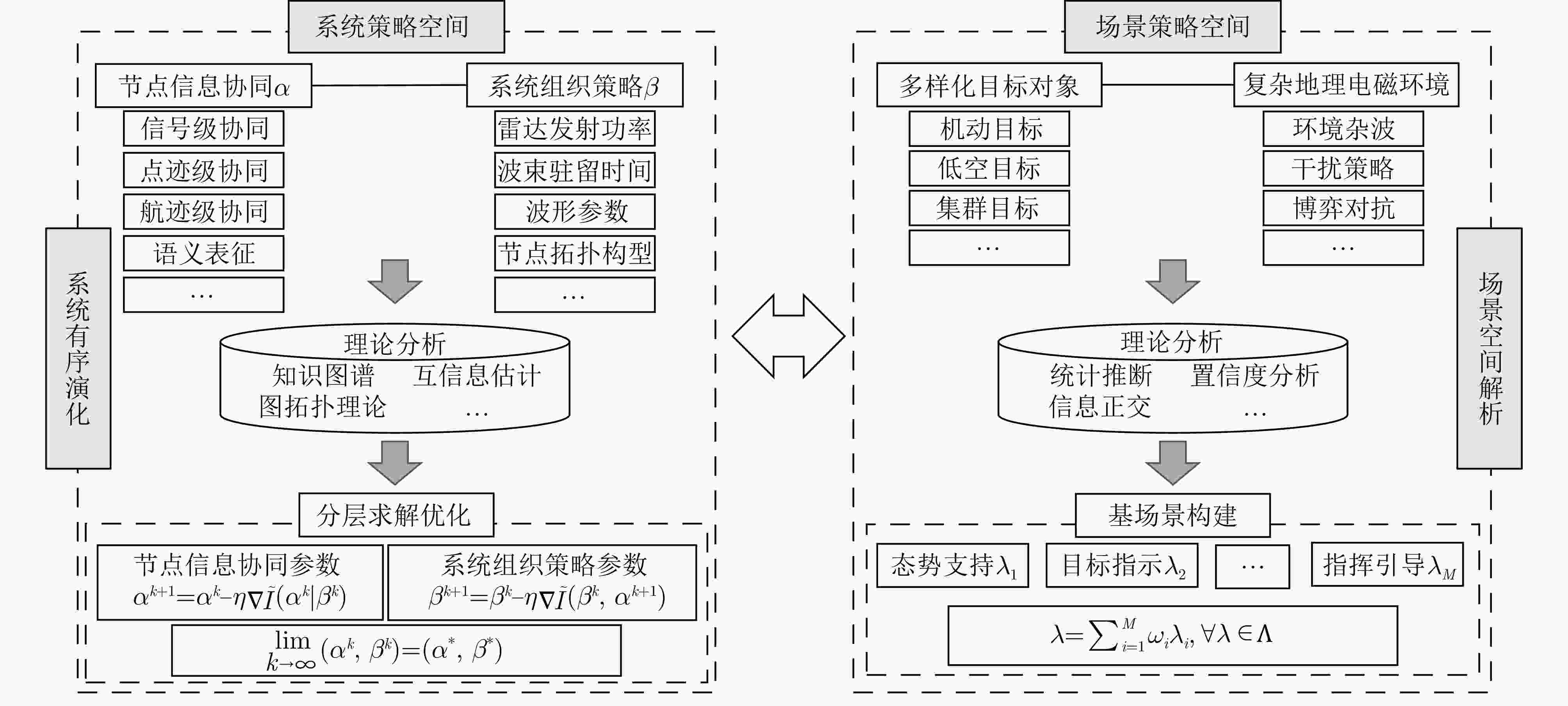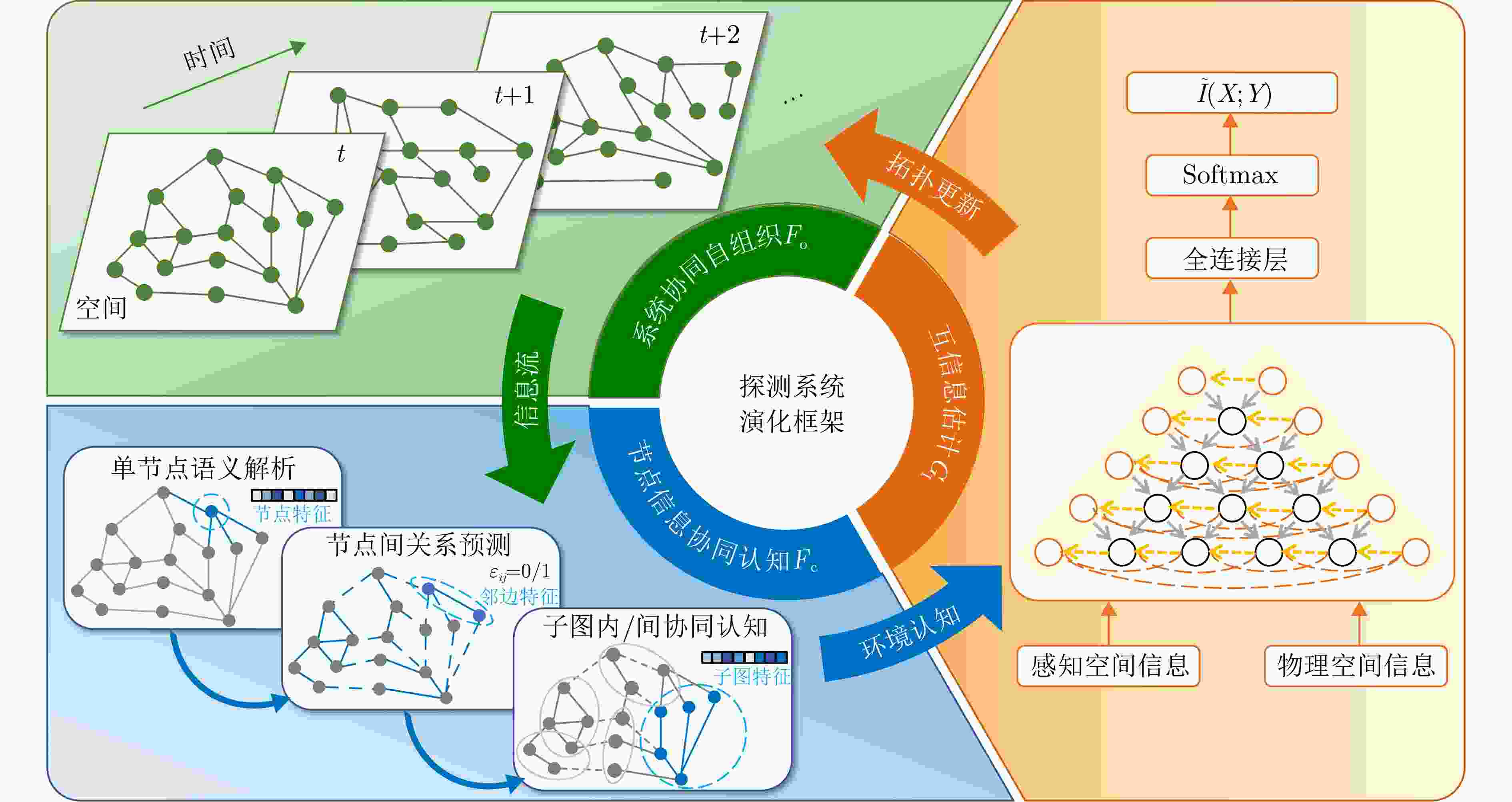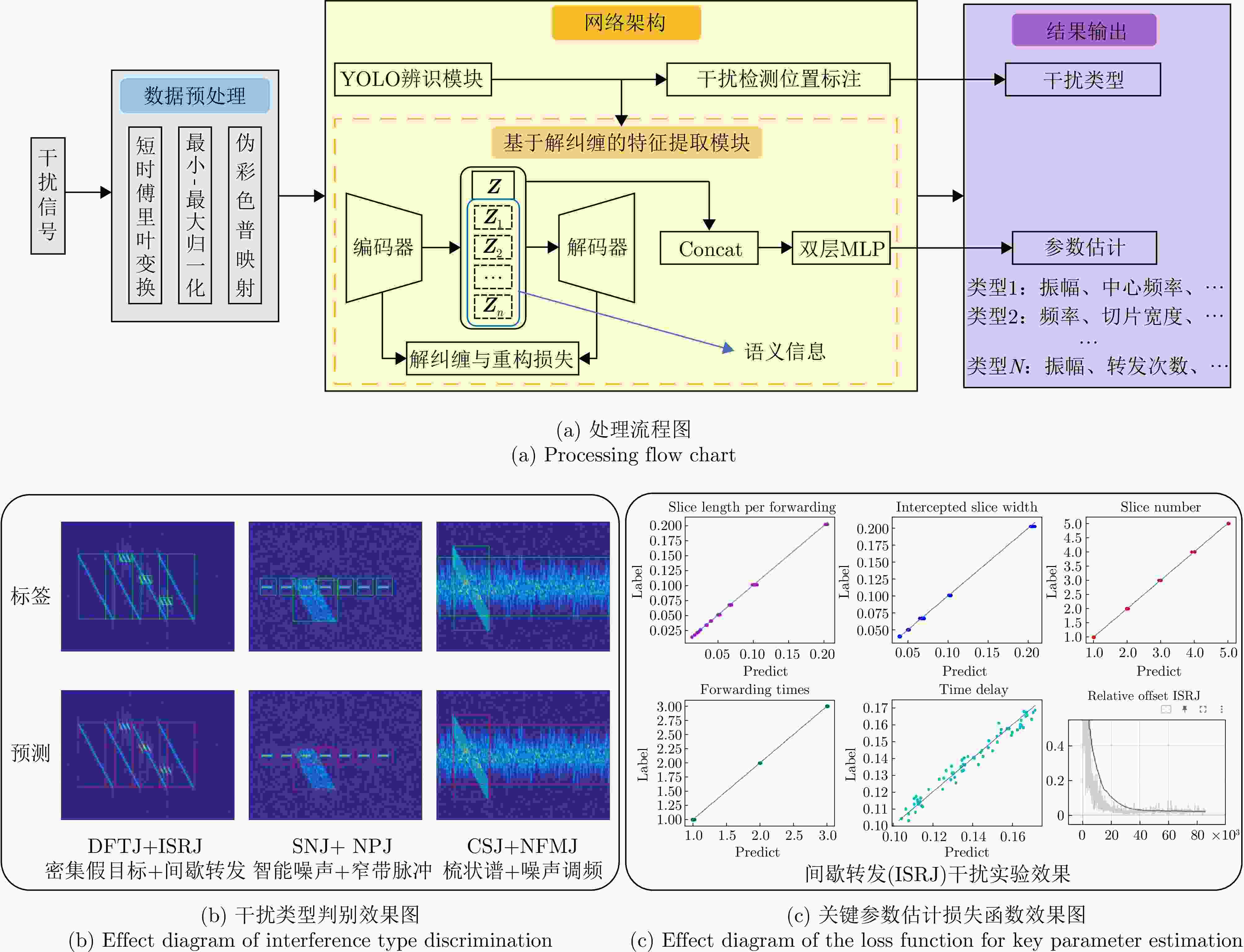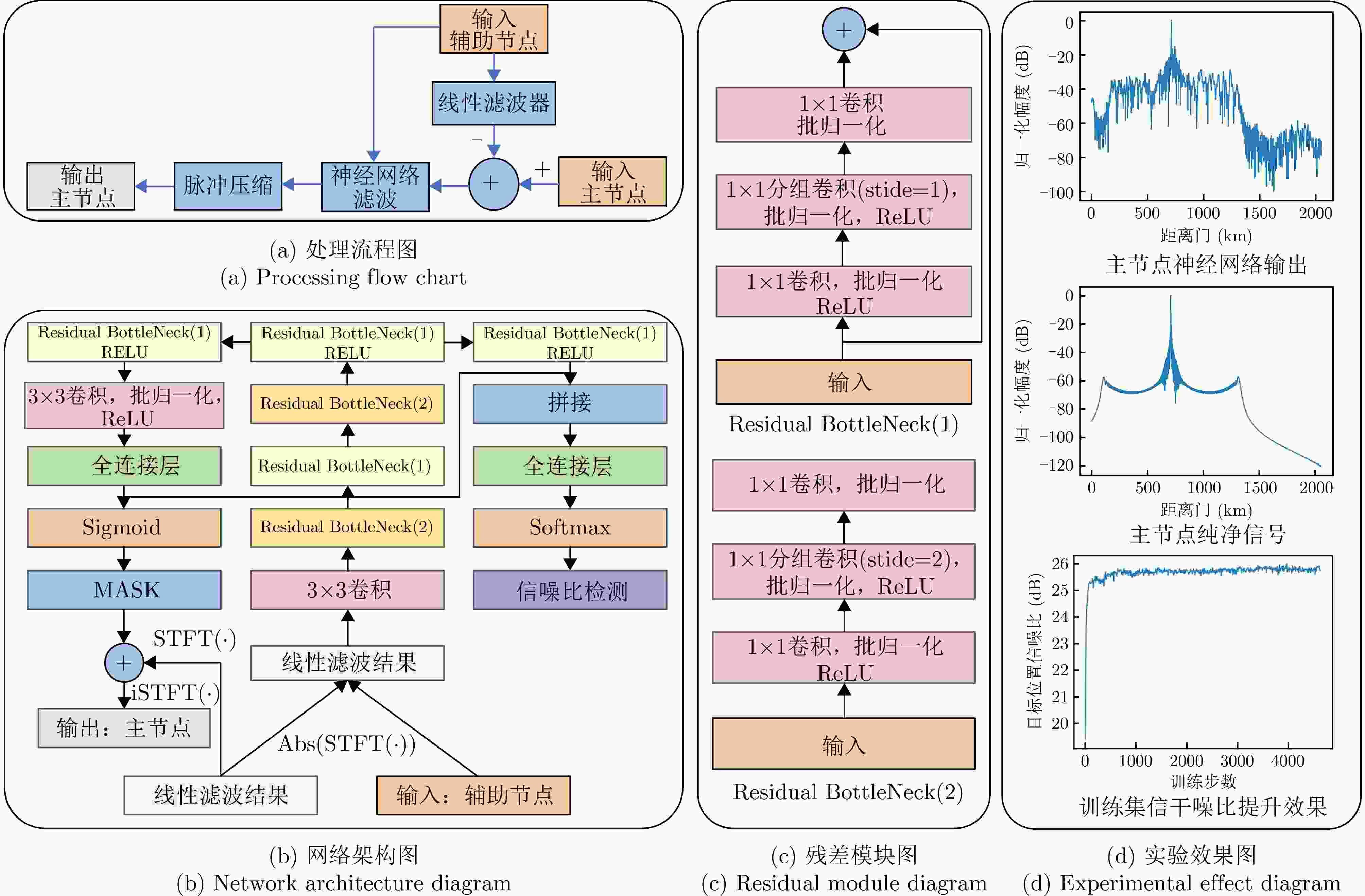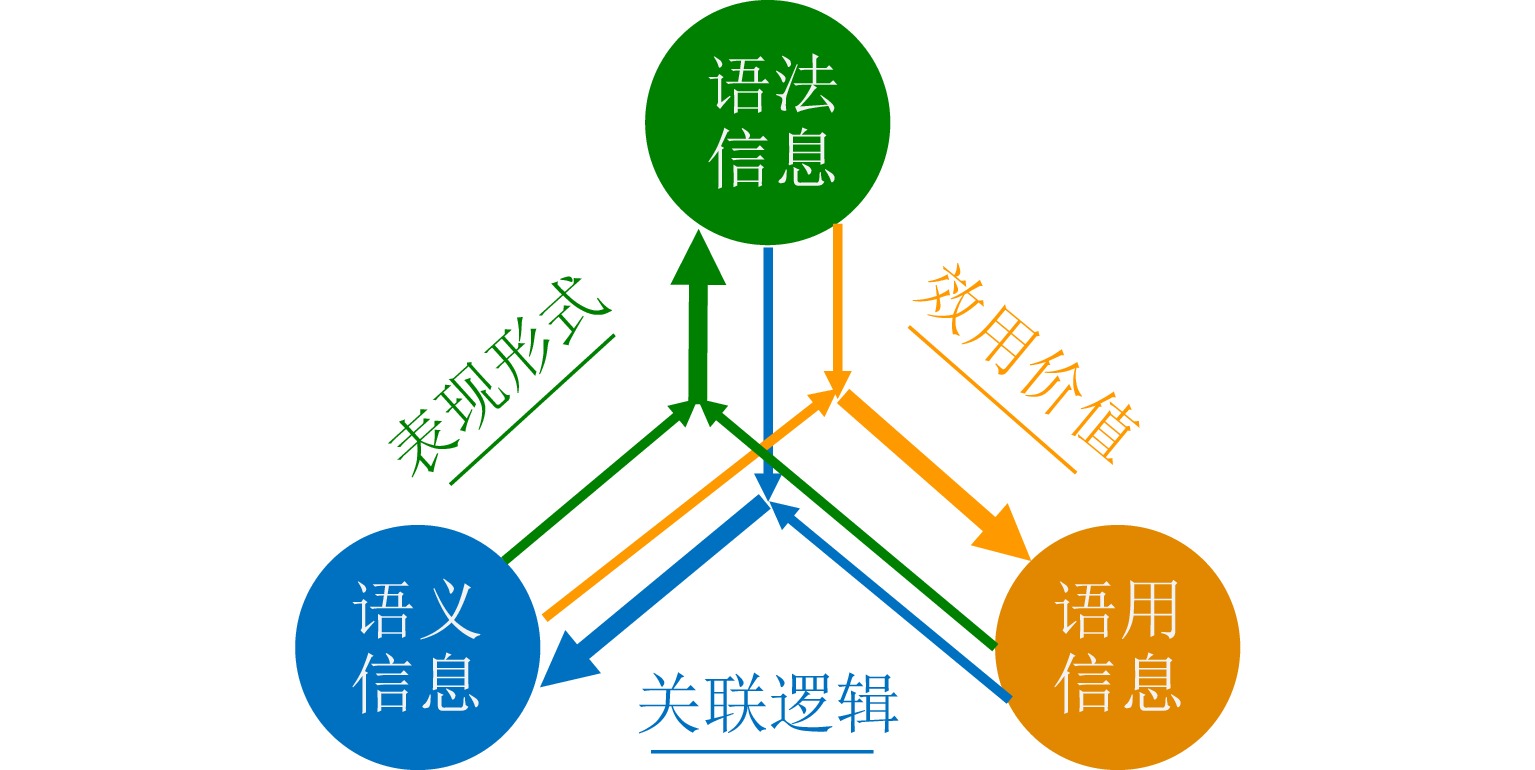-
摘要: 该文面向高动态强对抗战场环境下复杂感知系统在探测、跟踪及抗干扰等核心任务中的适应性难题,提出以信息驱动为核心的系统理论模型与构建方法体系。具体而言,构建基于语法、语义、语用的多层信息描述框架突破单一语法结构及表层语义的局限,提出系统动态演化架构打破传统静态建模与固定模式设计的应用壁垒。此外,将上述理论成果应用于分布式雷达探测系统实践,针对系统寻优的复杂性难题,设计基于有限场景交互学习机制与结构化分层优化算法,实现系统有序组织与能力涌现,为复杂战场环境下智能感知系统设计提供了理论范式与技术路径。Abstract: This paper addresses the challenges of adapting complex perception systems to perform core tasks such as detection, tracking, and countermeasures in highly dynamic and adversarial battlefield environments. We propose an information-driven theoretical model and a systematic methodology for system construction. This study introduces an information-driven theoretical model and construction methodology for such systems. Specifically, a multi-layered information description framework is introduced to overcome the application barriers of traditional static modeling and fixed-pattern design. This framework is based on syntax, semantics, and pragmatics and is designed to overcome the limitations of single syntactic structures and surface-level semantics. A dynamic evolution architecture is incorporated into the system. The theoretical achievements are also applied to the practice of distributed radar detection systems. Moreover, a structured hierarchical optimization algorithm with a finite-scenario interactive learning mechanism is designed to achieve ordered system organization and capability emergence, thereby addressing the complexity of system optimization. This study provides a theoretical framework and technical approach for the design of intelligent perception systems in complex battlefield environments.
-
1 分布式雷达探测系统分层优化算法
1. Hierarchical optimization algorithm for distributed radar detection systems
初始化:节点信息协同参数$\alpha^{(0)} $,系统自组织策略参数$\beta^{(1)} $ 配置:外层迭代次数T,内层迭代次数K,节点N 1. for 外层迭代t=1 to T–1 do 2. // 内层优化:节点协同参数 3. 利用系统协同自组织网络收集多N个探测节点的接收信息
$\mathcal{R}_{t}=F_{{\mathrm{o}}}\left(R_{1}^{t},R_{2}^{t}, \cdots, R_{N}^{t} ; \beta^{(t)}\right) $4. $\alpha^{(t, 0)} \leftarrow \alpha^{(t-1)} $ 5. for内层迭代k=1 to K–1 do 6. 节点信息协同认知处理网络,进行多节点信息的解纠
缠、去冗余和信息融合,完成环境认知7. 计算感知表征:$Y \leftarrow F_{{\mathrm{c}}}\left(\mathcal{R}_{t} ; \alpha^{(t, k-1)}\right) $ 8. 互信息估计:计算物理空间X与感知空间Y的互信息: $\tilde{I}_{\alpha^{(t, k-1)},{\beta}^{(t)}}(X ; Y) $ 9. 更新$\alpha $参数: $\alpha^{(t, k)} \leftarrow \alpha^{(t, k-1)}-\eta_{\alpha} \nabla_{\alpha} \tilde{I} $ 10. end for 11. $\alpha^{(t)} \leftarrow \alpha^{(t, K)} $ 12. // 外层优化:系统策略参数 13. 计算感知表征:$Y \leftarrow F_{{\mathrm{c}}}\left(\mathcal{R}_{t} ; \alpha^{(t)}\right) $ 14. 互信息估计:计算物理空间X与感知空间Y的互信息: $\tilde{I}_{\alpha^{(t)}, \beta^{(t)}}(X ; Y) $ 15. 反向更新$\beta $参数: $\beta^{(t+1)} \leftarrow \beta^{(t)}-\eta_{\beta} \nabla_{\beta} \tilde{I} $ 16. end for 17. return 最优参数$\alpha^{*} \leftarrow \alpha^{(T, K)}, \;\beta^{*} \leftarrow \beta^{(T)} $ -
[1] 郭雷. 系统学是什么[J]. 系统科学与数学, 2016, 36(3): 291–301. doi: 10.12341/jssms12734.GUO Lei. What is systematology[J]. Journal of Systems Science and Mathematical Sciences, 2016, 36(3): 291–301. doi: 10.12341/jssms12734. [2] SHANNON C E. Communication in the presence of noise[J]. Proceedings of the IRE, 1949, 37(1): 10–21. doi: 10.1109/JRPROC.1949.232969. [3] CARNAP R and BAR-HILLEL Y. An outline of a theory of semantic information[R]. RLE Technical Reports NO.247, 1952. [4] WEAVER W. Recent contributions to the mathematical theory of communication[J]. ETC: A Review of General Semantics, 1953, 10(4): 261–281. [5] DE LUCA A and TERMINI S. A definition of a nonprobabilistic entropy in the setting of fuzzy sets theory[J]. Information and Control, 1972, 20(4): 301–312. doi: 10.1016/S0019-9958(72)90199-4. [6] LONGO G. Information Theory New Trends and Open Problems[M]. Vienna: Springer, 1975: 219. doi: 10.1007/978-3-7091-2730-8. [7] FLORIDI L. Outline of a theory of strongly semantic information[J]. Minds and Machines, 2004, 14(2): 197–221. doi: 10.1023/B:MIND.0000021684.50925.c9. [8] 钟义信. 信息科学原理[M]. 3版. 北京: 北京邮电大学出版社, 2002.ZHONG Yixin. Principles of Information Science[M]. 3rd ed. Beijing: Beijing University of Posts and Telecommunications Press, 2002. [9] ZHONG Yixin. A theory of semantic information[J]. China Communications, 2017, 14(1): 1–17. doi: 10.1109/CC.2017.7839754. [10] QIN Zhijin, TAO Xiaoming, LU Jianhua, et al. Semantic communications: Principles and challenges[EB/OL]. https://arxiv.org/abs/2201.01389, 2021. [11] SHI Yuanming, ZHOU Yong, WEN Dingzhu, et al. Task-oriented communications for 6G: Vision, principles, and technologies[J]. IEEE Wireless Communications, 2023, 30(3): 78–85. doi: 10.1109/MWC.002.2200468. [12] GETU T M, KADDOUM G, and BENNIS M. A survey on goal-oriented semantic communication: Techniques, challenges, and future directions[J]. IEEE Access, 2024, 12: 51223–51274. doi: 10.1109/ACCESS.2024.3381967. [13] VASWANI A, SHAZEER N, PARMAR N, et al. Attention is all you need[C]. The 31st International Conference on Neural Information Processing Systems, Long Beach, USA, 2017: 6000–6010. doi: 10.5555/3295222.3295349. [14] BROWN T B, MANN B, RYDER N, et al. Language models are few-shot learners[C]. The 34th International Conference on Neural Information Processing System, Vancouver, Canada, 2020: 159. doi: 10.5555/3495724.3495883. [15] LIU Aixin, FENG Bei, XUE Bing, et al. DeepSeek-V3 technical report[EB/OL]. https://arxiv.org/abs/2412.19437, 2024. [16] NIU Kai and ZHANG Ping. A mathematical theory of semantic communication[EB/OL]. https://arxiv.org/abs/2401.13387, 2024. [17] HARTE J, UMEMURA K, and BRUSH M. DynaMETE: A hybrid MaxEnt-plus-mechanism theory of dynamic macroecology[J]. Ecology Letters, 2021, 24(5): 935–949. doi: 10.1111/ele.13714. [18] LINDGREN K. Information Theory for Complex Systems: An Information Perspective on Complexity in Dynamical Systems and Statistical Mechanics[M]. Berlin: Springer Berlin, Heidelberg, 2024: 5–20. [19] SCHREIBER T. Measuring information transfer[J]. Physical Review Letters, 2000, 85(2): 461–464. doi: 10.1103/PhysRevLett.85.461. [20] ROSAS F E, MEDIANO P A M, GASTPAR M, et al. Quantifying high-order interdependencies via multivariate extensions of the mutual information[J]. Physical Review E, 2019, 100: 032305. doi: 10.1103/PhysRevE.100.032305. [21] LIANG X S and KLEEMAN R. Information transfer between dynamical system components[J]. Physical Review Letters, 2005, 95: 244101. doi: 10.1103/PhysRevLett.95.244101. [22] JAMES R G, BARNETT N, and CRUTCHFIELD J P. Information flows? A critique of transfer entropies[J]. Physical Review Letters, 2016, 116(23): 238701. doi: 10.1103/PhysRevLett.116.238701. [23] JAMES R G, AYALA B D M, ZAKIROV B, et al. Modes of information flow[EB/OL]. https://arxiv.org/abs/1808.06723, 2018. [24] VARLEY T F, POPE M, FASKOWITZ J, et al. Multivariate information theory uncovers synergistic subsystems of the human cerebral cortex[J]. Communications Biology, 2023, 6(1): 451. doi: 10.1038/s42003-023-04843-w. [25] GIULIO T. An information integration theory of consciousness[J]. BMC Neuroscience, 2004, 5(1): 42. doi: 10.1186/1471-2202-5-42. [26] 陈保亚, 杜兆金. 语言学概论[M]. 北京: 北京大学出版社, 2023: 107–208.CHEN Baoya and DU Zhaojin. Introduction to Linguistics[M]. Beijing: Peking University Press, 2023: 107–208. [27] DERHAM T, WOODBRIDGE K, GRIFFITHS H, et al. The design and development of an experimental netted radar system[C]. 2003 International Conference on Radar, Adelaide, Australia, 2003: 293–298. doi: 10.1109/RADAR.2003.1278755. [28] BAKER C J and HUME A L. Netted radar sensing[J]. IEEE Aerospace and Electronic Systems Magazine, 2003, 18(2): 3–6. doi: 10.1109/MAES.2003.1183861. [29] 刘宏伟, 严峻坤, 周生华. 网络化雷达协同探测技术[J]. 现代雷达, 2020, 42(12): 7–12. doi: 10.16592/j.cnki.1004-7859.2020.12.002.LIU Hongwei, YAN Junkun, and ZHOU Shenghua. Collaborative detection technology of netted radar[J]. Modern Radar, 2020, 42(12): 7–12. doi: 10.16592/j.cnki.1004-7859.2020.12.002. [30] 葛建军, 李春霞. 探测体系能力生成理论及方法[J]. 雷达科学与技术, 2018, 16(3): 237–241, 248. doi: 10.3969/j.issn.1672-2337.2018.03.001.GE Jianjun and LI Chunxia. Theory and method for capability generation of detection system[J]. Radar Science and Technology, 2018, 16(3): 237–241, 248. doi: 10.3969/j.issn.1672-2337.2018.03.001. [31] 袁野, 杨剑, 刘辛雨, 等. 基于任务效用最大化的多雷达协同任务规划算法[J]. 雷达学报, 2023, 12(3): 550–562. doi: 10.12000/JR23013.YUAN Ye, YANG Jian, LIU Xinyu, et al. Multiradar collaborative task planning based on task utility maximization[J]. Journal of Radars, 2023, 12(3): 550–562. doi: 10.12000/JR23013. [32] 易伟, 袁野, 刘光宏, 等. 多雷达协同探测技术研究进展: 认知跟踪与资源调度算法[J]. 雷达学报, 2023, 12(3): 471–499. doi: 10.12000/JR23036.YI Wei, YUAN Ye, LIU Guanghong, et al. Recent advances in multi-radar collaborative surveillance: Cognitive tracking and resource scheduling algorithms[J]. Journal of Radars, 2023, 12(3): 471–499. doi: 10.12000/JR23036. [33] 曾雅俊, 王俊, 魏少明, 等. 分布式多传感器多目标跟踪方法综述[J]. 雷达学报, 2023, 12(1): 197–213. doi: 10.12000/JR22111.ZENG Yajun, WANG Jun, WEI Shaoming, et al. Review of the method for distributed multi-sensor multi-target tracking[J]. Journal of Radars, 2023, 12(1): 197–213. doi: 10.12000/JR22111. [34] YAN Junkun, JIAO Hao, PU Wenqiang, et al. Radar sensor network resource allocation for fused target tracking: A brief review[J]. Information Fusion, 2022, 86/87: 104–115. doi: 10.1016/j.inffus.2022.06.009. [35] LECUN Y, BOTTOU L, BENGIO Y, et al. Gradient-based learning applied to document recognition[J]. Proceedings of the IEEE, 1998, 86(11): 2278–2324. doi: 10.1109/5.726791. [36] HE Kaiming, ZHANG Xiangyu, REN Shaoqing, et al. Deep residual learning for image recognition[C]. 2016 IEEE Conference on Computer Vision and Pattern Recognition, Las Vegas, USA, 2016: 770–778. doi: 10.1109/CVPR.2016.90. [37] WILLIAMS R J and ZIPSER D. A learning algorithm for continually running fully recurrent neural networks[J]. Neural Computation, 1989, 1(2): 270–280. doi: 10.1162/neco.1989.1.2.270. [38] HOCHREITER S and SCHMIDHUBER J. Long short-term memory[J]. Neural Computation, 1997, 9(8): 1735–1780. doi: 10.1162/neco.1997.9.8.1735. [39] CHO K, VAN MERRIËNBOER B, GULCEHRE C, et al. Learning phrase representations using RNN encoder-decoder for statistical machine translation[C]. The 2014 Conference on Empirical Methods in Natural Language Processing (EMNLP), Doha, Qatar, 2014: 1724–1734. doi: 10.3115/v1/D14-1179. [40] KINGMA D P and WELLING M. Auto-encoding variational Bayes[C]. 2nd International Conference on Learning Representations, Banff, Canada, 2014. [41] ZHANG Ziwei, CUI Peng, and ZHU Wenwu. Deep learning on graphs: A survey[J]. IEEE Transactions on Knowledge and Data Engineering, 2022, 34(1): 249–270. doi: 10.1109/TKDE.2020.2981333. [42] BATTAGLIA P W, HAMRICK J B, BAPST V, et al. Relational inductive biases, deep learning, and graph networks[EB/OL]. https://arxiv.org/abs/1806.01261, 2018. [43] ZHOU Jie, CUI Ganqu, HU Shengding, et al. Graph neural networks: A review of methods and applications[J]. AI Open, 2020, 1: 57–81. doi: 10.1016/j.aiopen.2021.01.001. [44] JAIN A, ZAMIR A R, SAVARESE S, et al. Structural-RNN: Deep learning on spatio-temporal graphs[C]. 2016 IEEE Conference on Computer Vision and Pattern Recognition, Las Vegas, USA, 2016: 5308–5317. doi: 10.1109/CVPR.2016.573. [45] LI Yaguang, YU R, SHAHABI C, et al. Diffusion convolutional recurrent neural network: Data-driven traffic forecasting[C]. 6th International Conference on Learning Representations, Vancouver, Canada, 2018. [46] YAN Sijie, XIONG Yuanjun, and LIN Dahua. Spatial temporal graph convolutional networks for skeleton-based action recognition[C]. The Thirty-Second AAAI Conference on Artificial Intelligence, New Orleans, USA, 2018. doi: 10.1609/aaai.v32i1.12328. [47] SONG Chao, LIN Youfang, GUO Shengnan, et al. Spatial-temporal synchronous graph convolutional networks: A new framework for spatial-temporal network data forecasting[C]. The Thirty-Fourth AAAI Conference on Artificial Intelligence, New York, USA, 2020: 914–921. doi: 10.1609/aaai.v34i01.5438. [48] HJELM R D, FEDOROV A, LAVOIE-MARCHILDON S, et al. Learning deep representations by mutual information estimation and maximization[C]. 7th International Conference on Learning Representations, New Orleans, USA, 2019. [49] SANCHEZ E H, SERRURIER M, and ORTNER M. Learning disentangled representations via mutual information estimation[C]. 16th European Conference on Computer Vision, Glasgow, UK, 2020: 205–221. doi: 10.1007/978-3-030-58542-6_13. [50] REDMON J, DIVVALA S, GIRSHICK R, et al. You only look once: Unified, real-time object detection[C]. 2016 IEEE Conference on Computer Vision and Pattern Recognition, Las Vegas, USA, 2016: 779–788. doi: 10.1109/CVPR.2016.91. [51] WANG C Y, BOCHKOVSKIY A, and LIAO H Y M. YOLOv7: Trainable bag-of-freebies sets new state-of-the-art for real-time object detectors[C]. 2023 IEEE/CVF Conference on Computer Vision and Pattern Recognition (CVPR), Vancouver, Canada, 2023: 7464–7475. doi: 10.1109/CVPR52729.2023.00721. [52] VELIČKOVIĆ P, CUCURULL G, CASANOVA A, et al. Graph attention networks[C]. 6th International Conference on Learning Representations, Vancouver, Canada, 2018. [53] MCMAHAN B, MOORE E, RAMAGE D, et al. Communication-efficient learning of deep networks from decentralized data[C]. 20th International Conference on Artificial Intelligence and Statistics, Fort Lauderdale, USA, 2017: 1273–1282. [54] HOSPEDALES T, ANTONIOU A, MICAELLI P, et al. Meta-learning in neural networks: A survey[J]. IEEE Transactions on Pattern Analysis and Machine Intelligence, 2022, 44(9): 5149–5169. doi: 10.1109/TPAMI.2021.3079209. [55] ZHANG Jiaxiang, LIANG Zhennan, ZHOU Chao, et al. Radar compound jamming cognition based on a deep object detection network[J]. IEEE Transactions on Aerospace and Electronic Systems, 2023, 59(3): 3251–3263. doi: 10.1109/TAES.2022.3224695. [56] ZHOU Xinquan and LENG Yanhong. Residual acoustic echo suppression based on efficient multi-task convolutional neural network[EB/OL]. https://arxiv.org/abs/2009.13931, 2020. -



 作者中心
作者中心 专家审稿
专家审稿 责编办公
责编办公 编辑办公
编辑办公
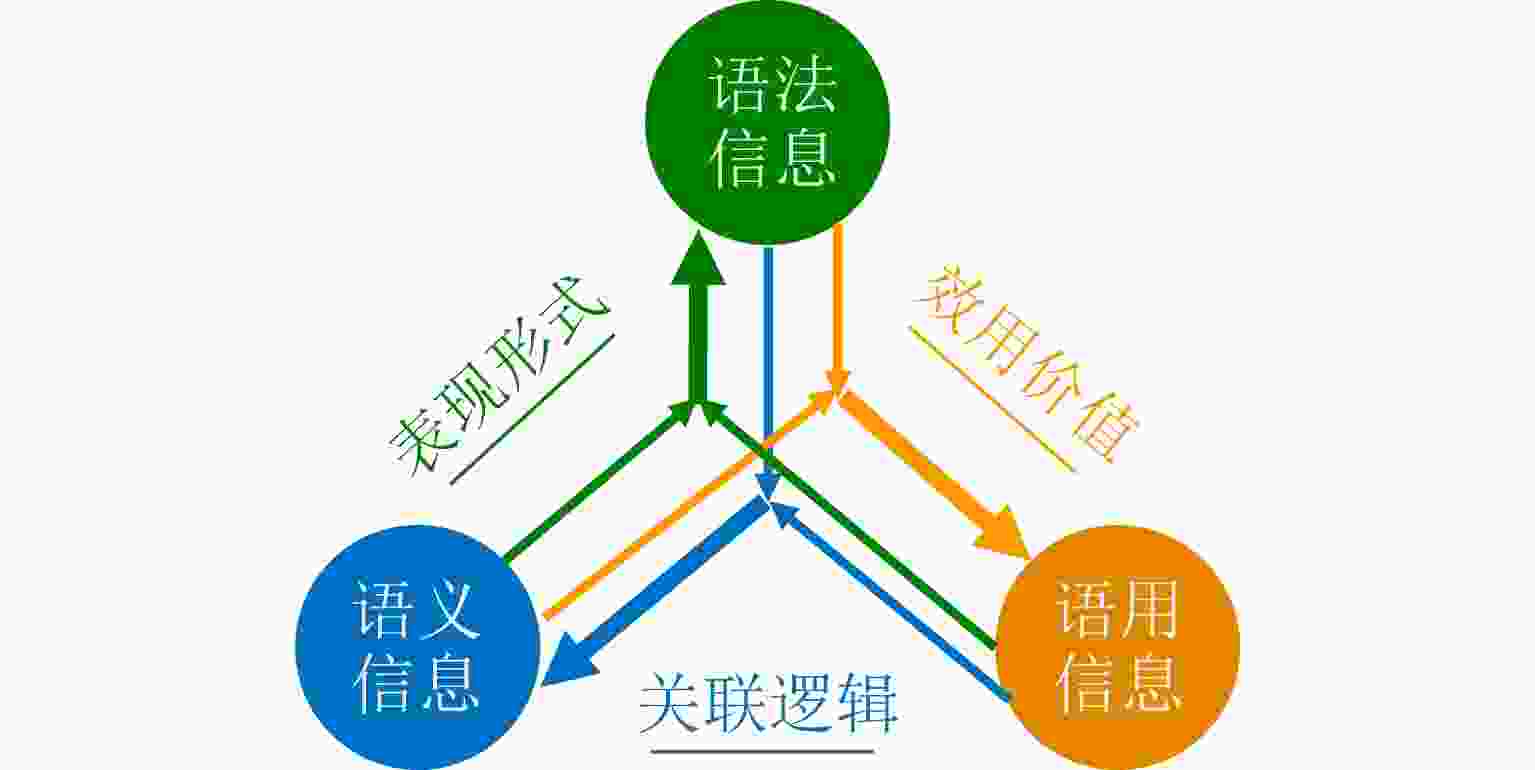
 下载:
下载:
